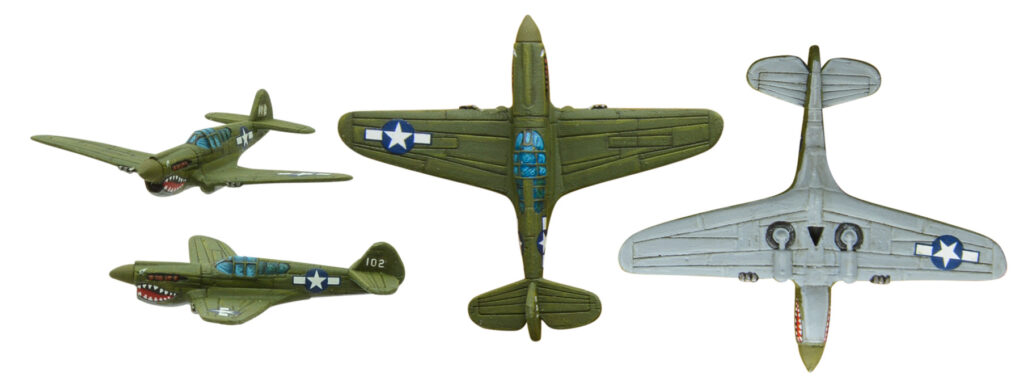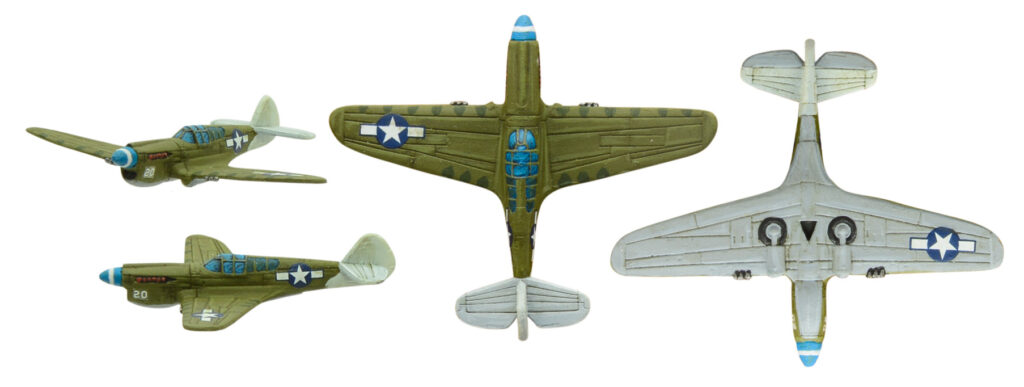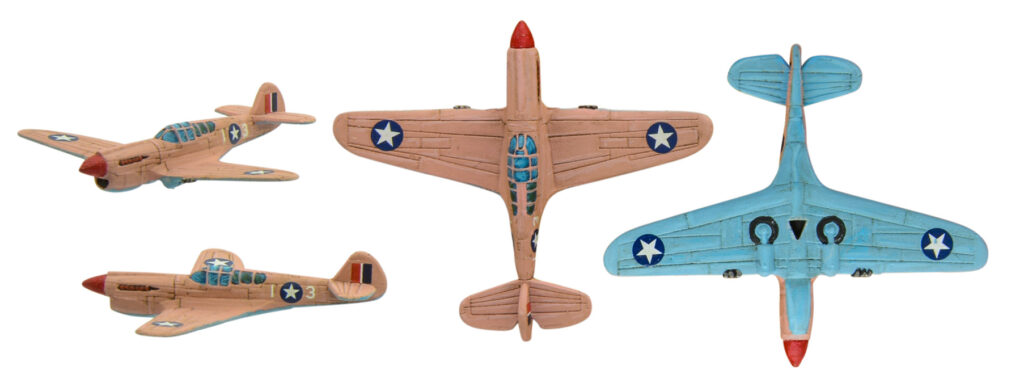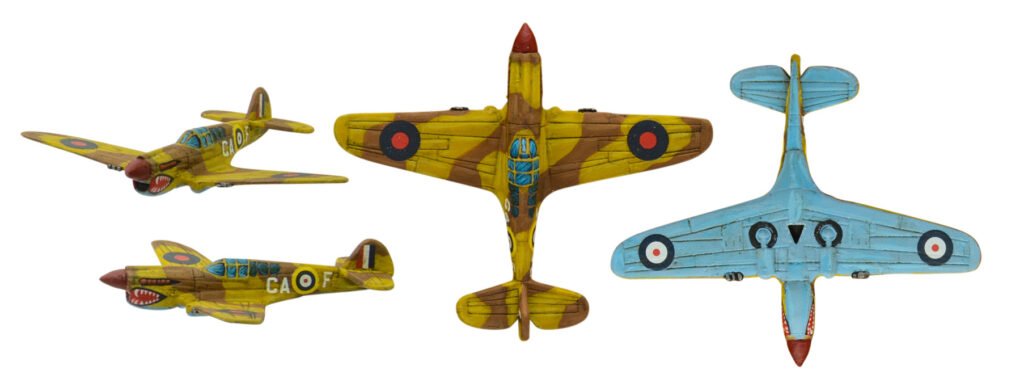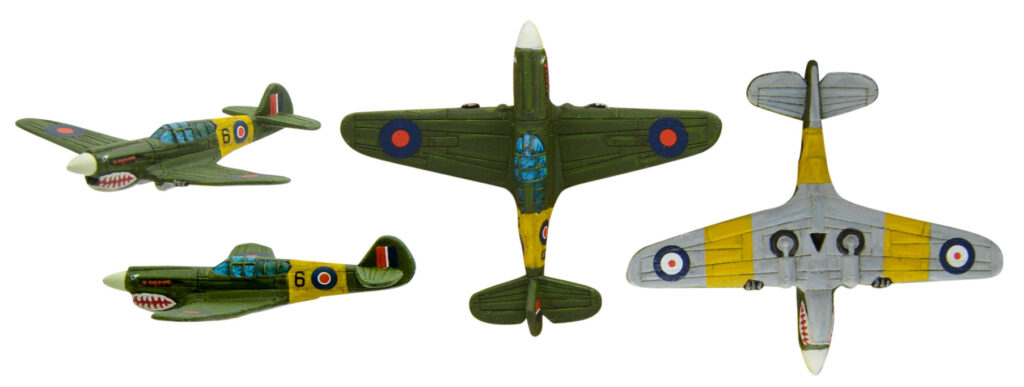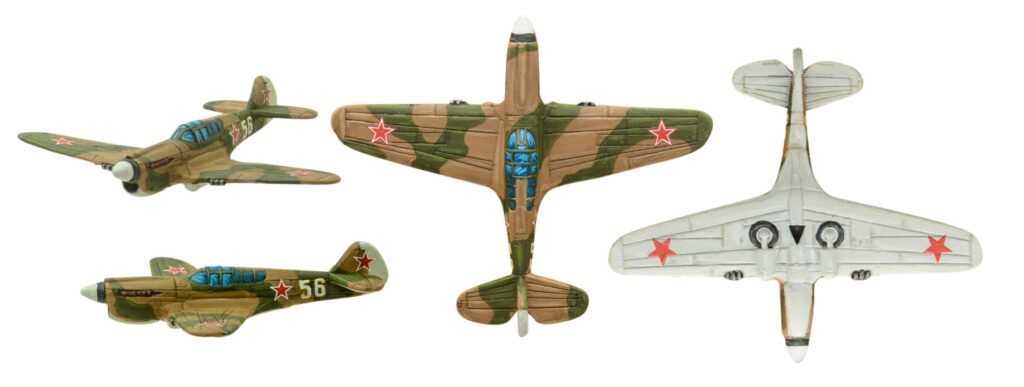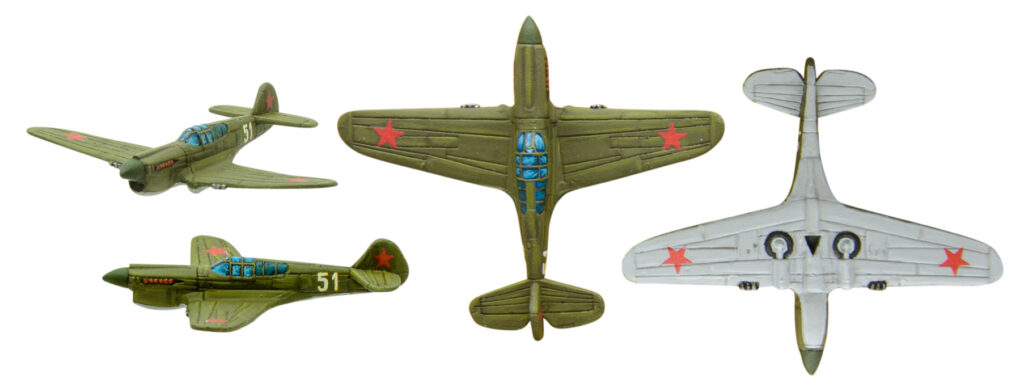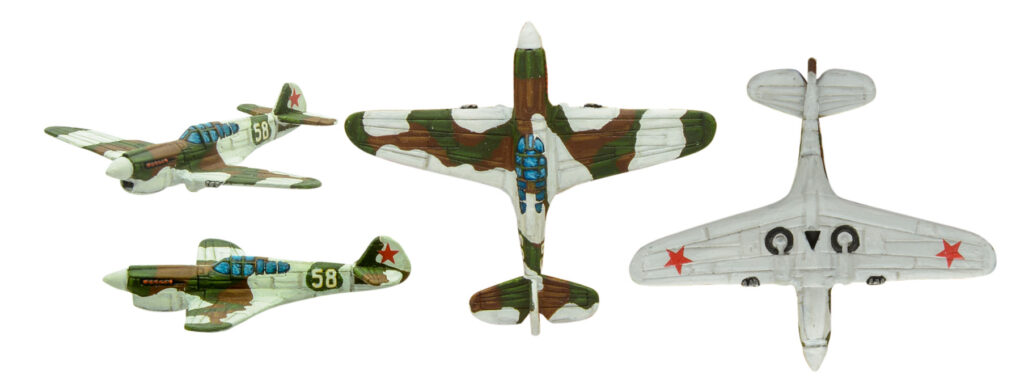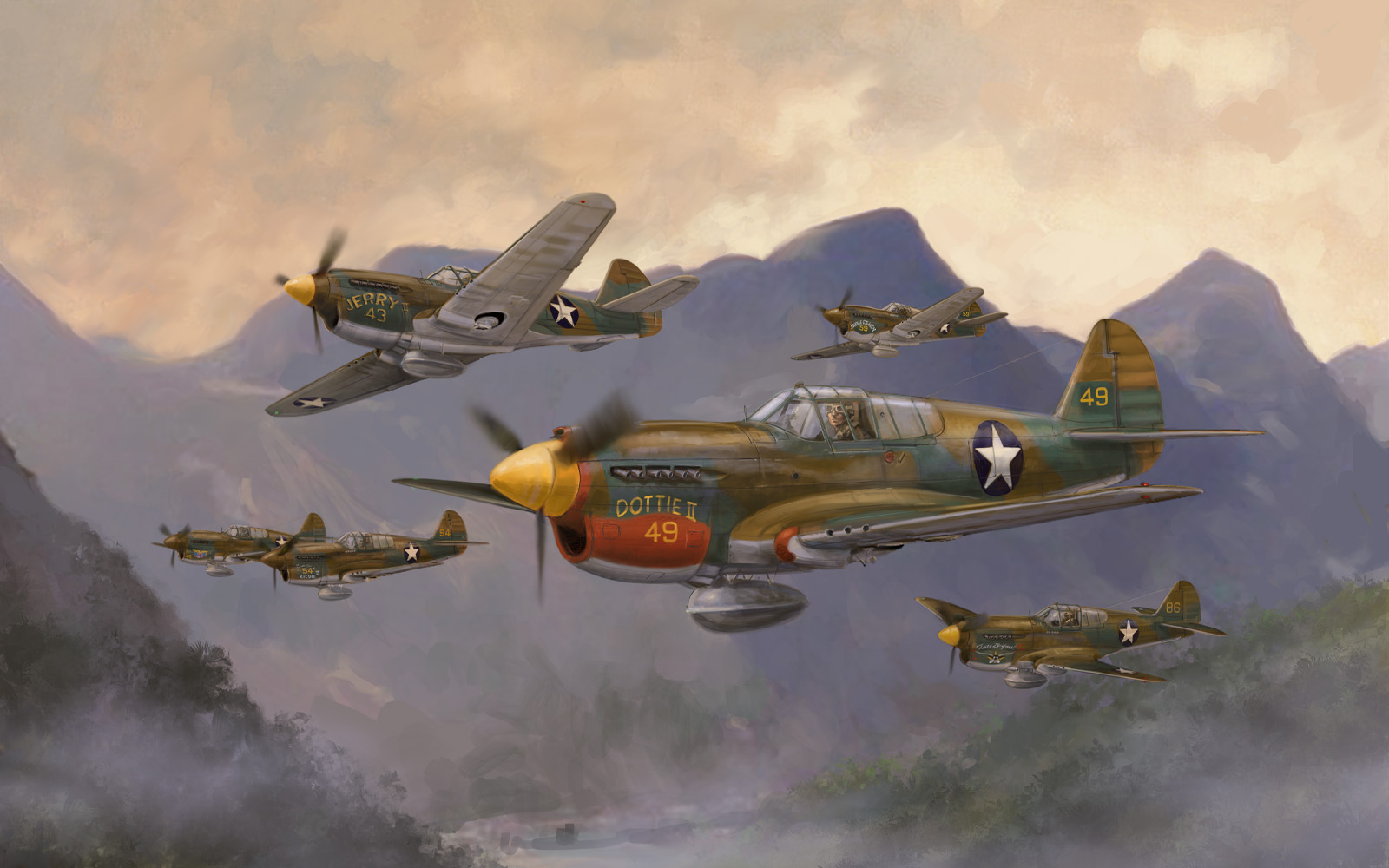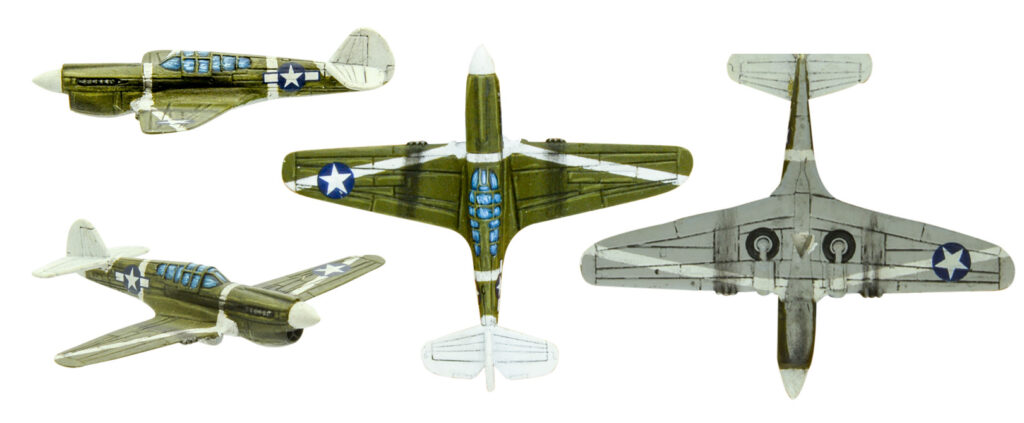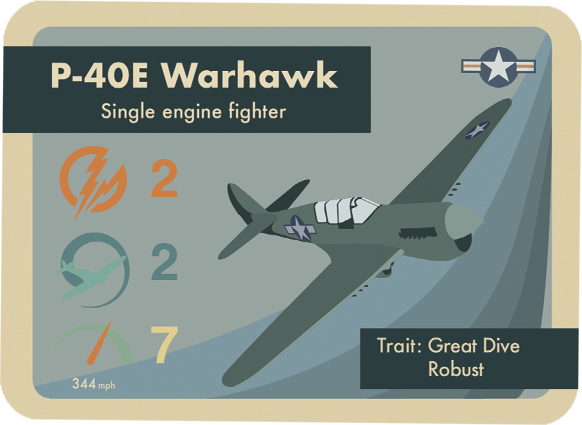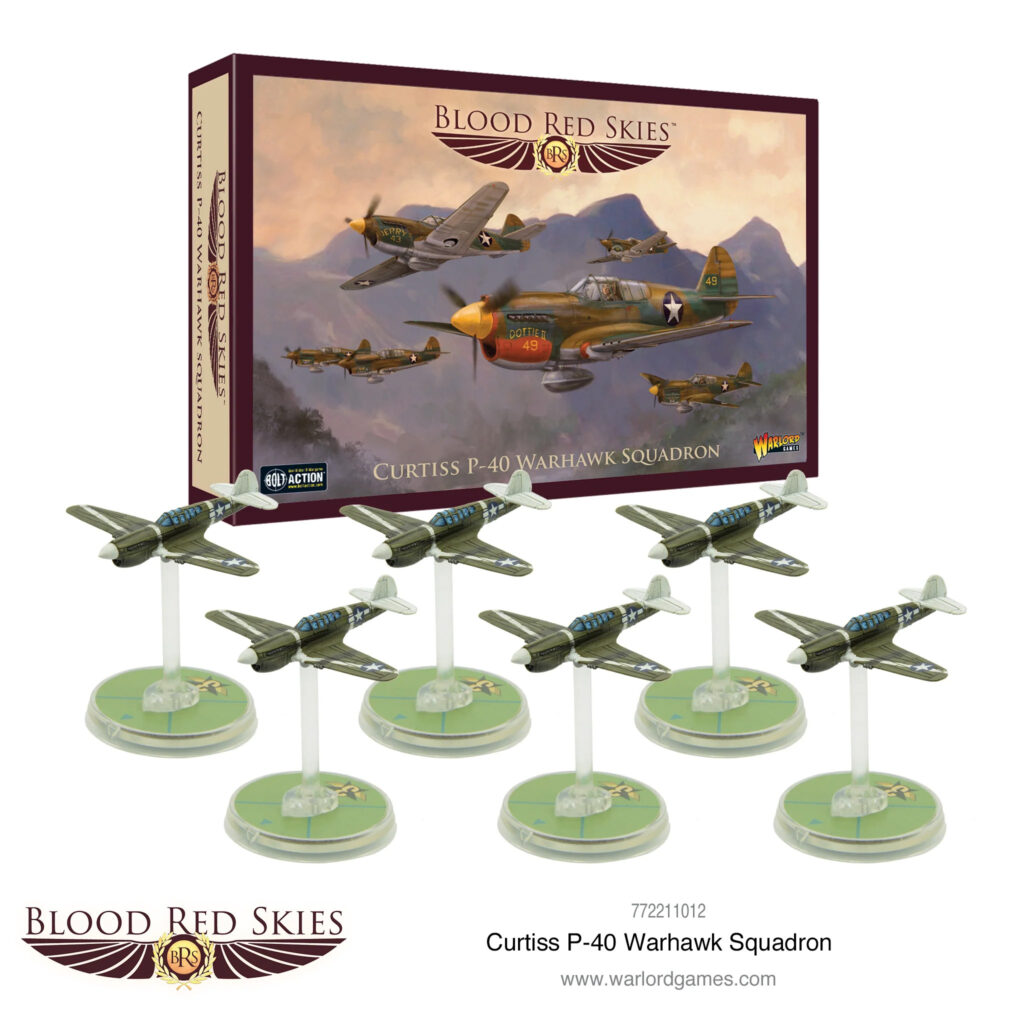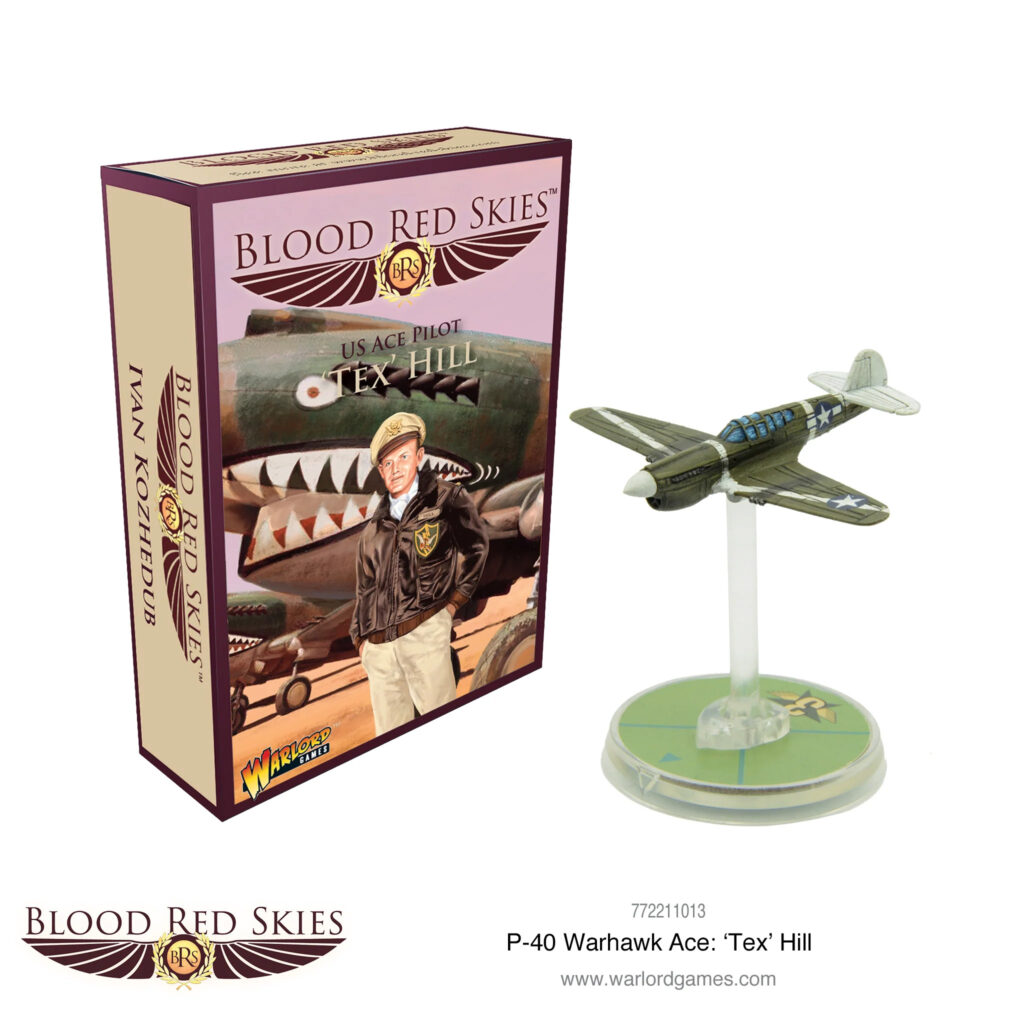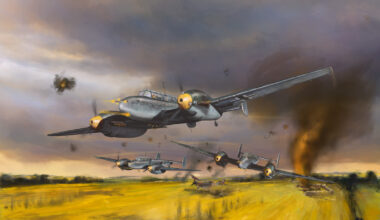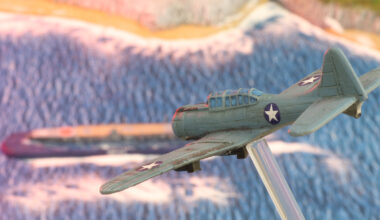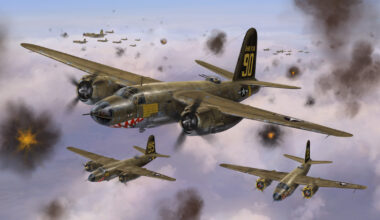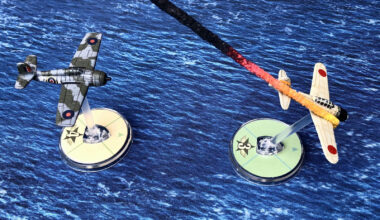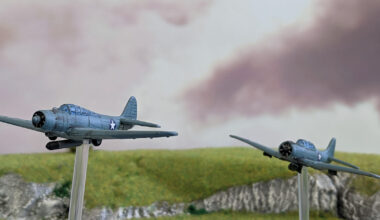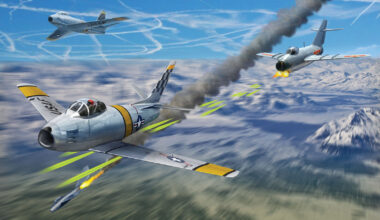The Curtiss P-40 Warhawk was an American single-engined, single-seat, all-metal fighter and ground-attack aircraft that first flew in 1938. Used by most Allied powers during World War II, it would see service throughout the war. It was the third most-produced US aircraft of WW2, behind the P-51 and P-47, with 13,738 examples produced.
Its first combat was with the British Commonwealth of the Desert Air Force over North Africa and the Middle East. Whilst ‘Warhawk’ was the name utilised by all USAAF and USAAC units that employed the aircraft, other Allies used the name ‘Tomahawk’ or ‘Kittyhawk’ to refer to specific variants. It was thus a Commonwealth Tomahawk of No. 112 Squadron of the RAF that first adopted the iconic ‘shark mouth’ design on an Allied aircraft.
The main theatres of operation for the P-40 were North Africa, the Southwest Pacific and China, though it also served significantly in the Middle East, Southeast Asia, Eastern Europe, Alaska and Italy. The P-40 was not especially effective at high-altitude combat, where it could be outclassed by both the Messerschmitt Bf 109 and the Focke-Wulf 190. It excelled at lower altitudes, however, serving as an air superiority fighter, bomber escort and fighter-bomber.
The aircraft’s low production cost kept it relevant throughout the war. Though it began to develop a reputation as a mediocre design as technology progressed, this may have somewhat been overstated, with the type performing well until the end of the war. If wartime victory claim records are to be believed, the aircraft produced over 200 Allied fighter aces (from 7 different nations), including at least 20 double aces.
Vital Statistics
- Crew: 1
- Length: 9.665m
- Wingspan: 11.367m
- Max Speed: 538kph
- Combat Range: 1152km
- Armament: 6 × 0.50 in (12.70 mm) M2 Browning machine guns with 235 rounds per gun in the wings; 250 to 1,000 lb (110 to 450 kg) bombs to a total of 2,000 lb (910 kg) on three hardpoints (one under the fuselage and two underwing)
1st American Volunteer Group – “Flying Tigers”
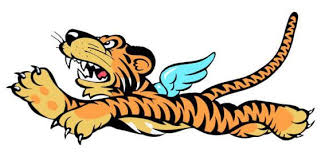
Don’t be fooled by the name! The First American Volunteer Group, although composed of US pilots from the United States Army Air Corps, US Navy, and US Marines, was actually officially part of the Chinese Air Force, recruited prior to the Japanese declaration of war. Their Curtiss P-40Bs were marked with Chinese colours though were retained under American control. Delays meant that they did not see operational service until 12 days after the attack on Pearl Harbour.
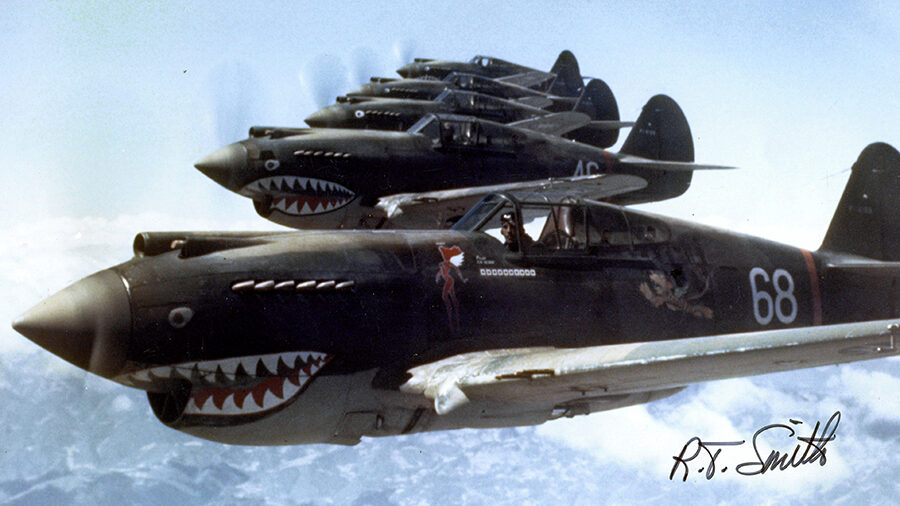
The purpose of the unit was to defend China from Japanese attack. The group provided a boon for US media when American morale was at its lowest point in the wake of Pearl Harbour – the exploits of the ‘Flying Tigers’ championed the hope of victory against the Japanese. They employed innovative tactics and achieved substantial success, destroying 296 enemy aircraft in exchange for losing only 14 pilots. The group was dissolved on 4 July 1942 and replaced by the 23rd Fighter Group of the USAAF. These aircraft retained the nose art of the Flying Tigers’ leftover Warhawks.
Ace Pilot: ‘Tex’ Hill
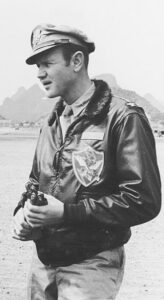
‘Tex’ Hill was born in Gwangju, Korea whilst under Japanese rule but was raised in Texas. After graduating from Austin College in 1938, he entered service as a United States Naval Aviator, earning his wings as a TBD Devastator torpedo bomber pilot aboard the USS Saratoga. He later joined a Vought SB2U Vindicator Dive Bomber Squadron aboard USS Ranger. In 1941 he was recruited to the 1st American Volunteer Group, training on the P-40 Warhawk in Burma.
Hill made his first kills on January 3rd 1942, shooting down two Japanese Nakajima Ki-27 ‘Nates’ over Thailand. Two more followed on the 23rd and he became an ace the next day with two further kills. He was promoted to squadron leader in March of that year, and by the time of the squadron’s disbanding in the summer, he was a double ace, with 12 and 1/4 aerial victories on his record.
Hill was one of only five of the ‘Flying Tigers’ to join the successor group, the 23rd Fighter Group, by which time he had the rank of Major, and earned five more victories in the cockpit of a P-51. He returned home in 1944 and took command of the 412th Fighter Group, the first operational American jet fighter group (flying the P-59 Airacomet and P-80 Shooting Star). He went on to serve in the Korean War with the Texas Air National Guard. He eventually retired as a Brigadier General, having earned a plethora of merits and medals throughout his career.
In Blood Red Skies
We’ve once again turned to the excellent Blood Red Skies online community to share their tabletop piloting expertise. Here Rose Napier guides us through some top tactics for P-40 squadrons.
Rose: In Blood Red Skies, the P-40E is perhaps one of the better early to mid-war fighters, and you pay for every part of it. It’s not exceptionally fast at Speed 7 (344mph), but with Great Dive it can easily outpace many of the aircraft it tends to face in historical matchups. Additionally, the aircraft’s substantial armour grants it the Robust trait (just like the F4F Wildcats in the Battle of Midway starter boxed set), which can very easily sway the tide of battle. Let’s break it down.
A 2/2/7 single engine fighter may not seem exemplary at first glance, but comparing it to the Zeroes, Saettas, and Bf-109Fs it will mainly be facing, it is brilliantly well-rounded. Faster and better armed than the A6M2s and C.200s it faces in the Pacific and Mediterranean theatres, it also boasts superior firepower when brought to bear against the Friedrichs on the Eastern Front, making it a viable option for any Allied squadron in or around the early 1940s. The biggest issue with the Warhawk is its price; clocking in at 34 points per airframe, you lose a lot of potential points compared to the contemporary Spitfire Vb or Yak-1B fighters for the Allies. However, for the USAAF, the Warhawk might end up being one of your only choices, at least up until ‘43.
For doctrine cards, an obvious choice is Low Altitude Performance, as the Warhawk often excelled in low-altitude, high-speed engagements in actual air combat. The ability to deny enemy aircraft cheap shots against tailed P-40s is invaluable, and Low Altitude Performance provides exactly that. Slashing Attack can also be very useful with the P-40, allowing you to capitalise on the aircraft’s Great Dive trait to attack on turn two and catch your opponent unawares. Lastly, for the Soviet Air Force players out there, I will always suggest Maximum Effort for your lend-lease fighters; with proper deployment, the Poor Quality trait’s effect is negligible, and it is always handy to ignore Boom Chits scored on your aircraft.
Personally, I would run P-40s as, controversially, furball turn fighters. With their Agility of 2, they can easily keep up with enemy Shoot and Outmanoeuvre actions, and if an enemy aircraft gets a bit too close to a good shot, you can burn Low Altitude Performance or even Sustained Dive to immediately make a break for safety. While not exactly designed for swarm lists, you could make an endurance list by taking both Maximum Effort and the Drop Tanks equipment card in order to burn as many Boom Chits as possible, forcing your opponent to think more tactically about how to get your planes off the table.
All in all, the P-40 makes for an excellent Allied choice during the mid-war period, especially if you want to put pedal to metal and make a higher pilot skill list to control the airspace. Sadly, it does get outshone by things like the P-51 Mustang and Spitfire XIV in later years, but in early to mid-war-themed lists, it can easily be the queen of the skies.
Painting Schemes
We turned to the Design Studio’s resident expert in modelling and painting vehicles, Darek Wyrozebski, to paint a bunch of examples of the P-40 Warhawk, in order to demonstrate its wide use throughout the war in different theatres by different air forces. In each case, Darek has noted the specific paints he used.
